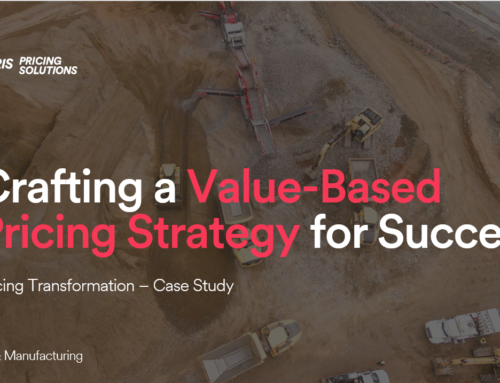Pricing products and services has been compared by one manager to “throwing darts at a spinning dart board – blindfolded.” Yet pricing provides the greatest leverage to an organization’s profitability.
For example, if the average FP500 firm raises its prices by just one per cent (while keeping costs and volume constant), its profit will increase approximately 12 per cent.
So clearly, pricing has a dramatic impact on the bottom line – but how do you anchor the dart board, remove the blindfold, and hit the bull’s-eye? One of the keys is conducting effective pricing research. The following are the “Five Cardinal Rules of Pricing Research.”
1. Define The Research Purpose
Understand the who, what, why, where, when and how behind your customers’ pricing decisions. To avoid receiving poor pricing information, focus on capturing some of the following elements of the buying process into the research design: the buying occasion – when and why they are buying; frequency of purchase; key decision maker; and length of the buying process.
2. Know Your Tools
Remember that not all tools are created equally. There are a number of common methods for collecting pricing data, but no two are exactly alike and no one method can be used all the time. The key is to match the data collection method to the pricing problem for which you are seeking input.
3. Understand How Your Customers Perceive Price
Price often plays a highly emotional role in the customer’s buying decision. When the price is too high, customer’s experience “sticker shock” and either defect to another supplier or wait until the price comes down before they purchase. On the other hand, a high price can sometimes signal a prestigious image; the customer is fi lled with a sense of exclusivity and belonging, and is willing to pay premium prices.In both cases, the price is perceived as high, but the customer’s reaction in each is different. Therefore, understanding how your customers view price in the context of their purchase is critical to effective pricing research design.
4. Use Research to Set – Not Just Sell Price – Support Your Sales Team
Of course big data’s impact on pricing strategy will be minimal if you do not have the support of your sales team. A company that is using big data needs to take its time to nurture its sales representatives and offer them full communication in any adjustments to pricing strategy. They will require thorough training into the background of why there has been a pricing shift and the positives that they must be able to convey to potential customers.
5. Use Segmentation to Select – or Reject – Your Customers
Price segmentation is often used to identify which group of customers is the “best” to serve. Although these customers are targeted, many companies can’t resist the temptation to sell their product or service to the whole market anyway, in a misguided attempt to grab volume. Consequently, these organizations get dragged down by serving the unprofitable “cherry pickers” at the expense of their profitable “core customers.”
DOWNLOAD A PDF OF THIS ARTICLE
By using pricing research and applying this framework to every pricing initiative, you will be able to make better pricing decisions and dramatically boost profits. If you’d like to know more about increasing the profitability of your company through pricing research then get in touch with us today. Our team of pricing researcher’s analyze your business to provide you with tailored solutions.





